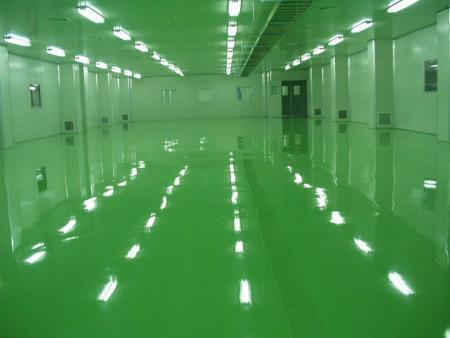Epoxy self-leveling, also known as "epoxy self-flowing floor", "epoxy floor", is based on epoxy resin, curing agent, diluent, solvent, dispersant, defoamer and some fillers, etc. A mixture of processed epoxy floor paints, combined with specific floor construction techniques, and a type of floor that is constructed on site.
Main characteristics
It has chemical properties such as water resistance, oil resistance, acid and alkali resistance, salt spray corrosion resistance, physical properties such as abrasion resistance, stamping resistance and scrub resistance, and the surface is bright, flat, beautiful, seamless, and easy. Clean, easy to maintain, durable, can meet the needs of modern industry to the floor, occupy an important position in the floor materials, is a long-lasting floor material ideal for modern industry, has been widely used in medicine, automotive, electronics, food , power, chemical and other industrial ground decoration.
Cement self-leveling is a high-tech green product with high technology content and complicated technical links. It is a dry-mixed powdery material composed of various active ingredients. It can be used in industrial plants, workshops, warehousing, commercial stores, exhibition halls, gymnasiums, hospitals, various open spaces, offices, etc. Villa, warm small space, etc., can be used as a facing layer or as a wear-resistant base layer.
Performance characteristics
1. Select solvent-free epoxy resin plus high-quality curing agent and conductive powder.
2, the surface is smooth, beautiful, and mirror effect.
3, wear resistance, pressure resistance, impact resistance, a certain degree of flexibility.
Construction process
1, the base surface treatment; (treatment of the surface of the dust and shedding layer).
2, uniform coating agent (home use water interface agent).
3. Laying copper wire and cutting groove; (this process is treated during hydropower renovation in home decoration).
4, scraping epoxy conductive intermediate layer paint; (no such link in home decoration).
5, grinding; vacuuming; (the grinding process should be completed before the self-leveling construction "usually using spin-tight grinding").
6. Use self-leveling epoxy paint to paint 1-2 times. (General home is not suitable for epoxy paint).
Mainly different materials, epoxy self-leveling is epoxy floor, cement self-leveling is cement floor. The difference is that the epoxy floor is like a layer of glue, very bright.

Related News
- What is the difference between waterborne glass paint and oily glass paint?
- Bubble problem in waterborne metal paint film formation
- Waterborne metal paint construction process
- Do you know the reason why glass lacquer can extend the life of log furniture?
- On the colored road, the old driver takes you on the road! Guangzhou Tianmai supply color wear-resistant pavement coating
- Characteristics and construction process of water-based crack paint
- In the hot summer days, the colored pavement will provide you with “heat and heat”. Guangzhou Tianmai supplies colored wear-resistant pavement paint.
- Waterborne glass paint type and application precautions
- How to apply water-based crack paint? Tianmai Chemical will solve your problems!
- Can epoxy anticorrosive paint be used outdoors?
- What is the role of epoxy anti-rust paint?
- What are the four aspects of water-based crack paint that will attract you in minutes?
- What is the difference between waterborne glass paint and oily glass paint?
- Waterborne metallic paint has strong adhesion
- The influence of metal materials in painting
- Characteristics of waterborne metallic paints and comparison with ordinary paints
- What about the discoloration of epoxy floor coatings?
- Application status, prospects and testing techniques of colored wear-resistant pavement coatings (1)
- What are the advantages and disadvantages of waterborne metal paint?
- How to paint glass on glass surface

